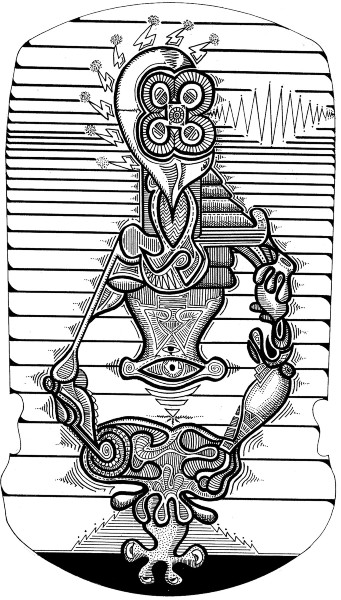About the Church
The Nuclear Platypus Church of Arglebargle, formally known as The Fellowship of the Fraternitatis of the Consecration of the Cathedral of the Veneration of the Sanctification of the Abbey of the Sanctuary of the Chapel of the Congregation of the Tabernacle of the Order of the Lodge of the Order of the Tabernacle of the Congregation of the Chapel of the Sanctuary of the Abbey of the Sanctification of the Veneration of the Cathedral of the Consecration of the Fraternitatis of the Fellowship of the First BiscuiTemple of the Nuclear Platypus Church of Arglebargle, Biscuitoidian Platypoid Orthodox, was founded in the year 4200 B.C. by the most reverent Pope Corncobbus the First, who received a blessed vision while astride his donkey on the road to Doughmascus, and lo!, the vision did tell Pope Corncobbus to help the yearning human masses find a suitable “roll model.”

Accept no imitations:
Founded in 4200 B.C. by Pope Corncobbus the First, only the Nuclear Platypus Church of Arglebargle can truthfully claim to be The World’s Oldest and Largest Biscuit Cult.
Since that fateful day over 6,000 years ago, the Church of Arglebargle has been the major force in the shaping of world history, the global authority upon which the infrastructure of human experience has been built. Originally funded by a string of drive-thru Biscuit stands along the Old Silk Road, the Church was soon beset by enemies from all sides, such as organizations dedicated to worship of the vile Anti-Biscuit, the most dreaded SpapOopGannopOlop (please see The Nuclear Platypus Biscuit Bible for additional information on the SpapOopGannopOlop).
The first concrete attack on the Church took place in 617 B.C., when Pope Poioq the Plaid, advocate of a harsh schismatic strain of Fundamentalist Biscuitism called The Rolling Pin of Wrath, was assassinated. Unknown assailants fooled Poioq into eating far more potato salad than any human body could ever realistically hope to digest and metabolize.
List of Victim Popes:
- Pope Wilbur XX.IVnd the Pustulent
- Pope Stan Jr. VIIst, Paragon of Prognathousnous
- Poindexter the Pukin’ Pope
- Buford Q. Jordan, the Pimped-Out Pope
- Quasimodo and Quasimoda, the Coed Popes
- Cletus the 5st, the Podunk Pope
- Pope Epop the Palindromic
- Myron “Mango” Bartholomew the 23th
- John Q Public, the Populist Pope
- Pope Gorski the 7rd, Paragon of Impecuniousness
- Prunella III.14, the Pi Pope
- Pope Junior Sr., Jr., the Redundant Pope
- Nerdley & Nerdella McNerdley, the Elopin’ Popes
- Pope “Tootie” Biff the 3nd
Soon after, the attacks were stepped up considerably. One of the more effective tactics was to sponsor contests to see who could create the best parody of Biscuitism. These parodic joke religions were presented as actual belief-systems and are the basis of today’s religious institutions. Many of these errant parodies of Biscuitism were eventually taken quite seriously.
